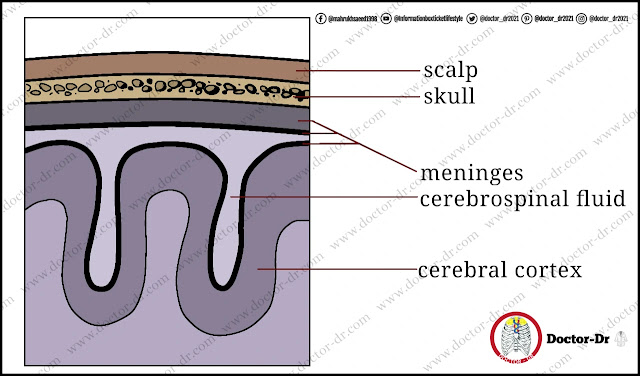Numerous illnesses can affect the neurological system. Pain, limb numbness, or slurred speech are symptoms of nervous system disorders. However, other bodily maladies may also be to blame for similar symptoms. The nervous system can signal a variety of problems since it regulates and receives information from every aspect of the body. As an illustration, numbness in the jaw that extends down the left arm is frequently a sign of a cardiac issue. Other aches might be signs of other issues,
Common headaches to serious illnesses can all be caused by disorders that impact the neurological system.
Headaches
One of the most frequent types of discomfort people experience is headaches. They might be brought on by sinus infections, allergies, colds, allergies, stress, and eye strain. A brain tumour, an illness, or a head injury are other possible headache causes. Despite the fact that headaches are perceived through the nervous system, issues with the nervous system seldom result in headaches. Headaches are felt in the muscles and other tissues around the brain because the brain lacks sensory neurons for sensing pain.
Most headaches are likely caused by tension. When the facial, neck, or scalp muscles tense up, a tension headache may result. The forehead, jaws, and neck and back of the head and head experience a dull, squeezing discomfort as a result. This type of headache may also result from holding the head in an uncomfortable posture for an extended period of time or from a physical issue like impaired eyesight. The best way to treat this sort of headache is to address the source of the stress or pressure. medical assistance should be sought for any headache that lasts for many days.s and other tissues surrounding it.
An intense headache known as a migraine is brought on by the narrowing and expansion of blood vessels in the brain. Some persons experience bright spots or tingling in their arms and legs prior to the onset of pain. Intense discomfort, light sensitivity, and frequently nausea accompany this. A severe headache with throbbing pain comes after the first symptoms have subsided. An acute migraine may linger for one or two days. It could happen frequently or very infrequently.
There are several possible causes of migraines. Stress, consuming certain foods or chemicals, smoking, drinking alcohol, changing one's regular routine, or being under stress can all cause this form of headache. It's possible for families to pass on a propensity for migraines. To some extent, a variety of medications have been utilised to treat these headaches. There is no remedy as of now.
Head Injuries
Any head injury or significant fall might harm the neurological system. A concussion is a severe head injury that renders the victim unconscious (kun KUSH un). Recovery generally comes through rest. A contusion might occur after an extremely forceful hit to the head. A contusion is a bruise [kun TOO zhun]. A brain contusion is a far more dangerous injury than a concussion. A coma that lasts days or weeks might result from it.
A coma is a state of profound unconsciousness from which one cannot be roused. If a blow to the head fractures the skull, bed rest will typically help the fracture heal. However, the person may be in grave risk if a contusion develops as a result of a skull fracture. A brain clot might be brought on by the blood from the contusion. The blood clot may need to be removed surgically.
Wear protective headgear to prevent head injuries while participating in sports, riding a bike, or working in hazardous environments. When driving, always buckle your seatbelt. When diving or swimming, take care. Don't dive in areas with rough bottoms or in shallow water. In any circumstance where an accident may have happened, proper first aid and medical attention should be given. Remember not to move the patient while administering first aid to someone who has suffered a serious fall and wait for certified medical personnel to arrive. Movement may result in nerve damage if the injury has not already done so. The effects of nerve injury can be long-lasting since neurons seldom regenerate.
Drug overdose, alcohol and carbon monoxide poisoning, and illness are among more causes of coma. Brain cells may start to die from a lack of oxygen if an injured person's heart stops pumping or if he or she stops breathing. Without a functional brain, a person cannot exist without assistance.
An EEG will not reveal any brain waves when the cerebral cortex and brainstem cells are dead. The term "brain dead" refers to a person whose central nervous system has stopped working and whose brain cells have died. Sometimes, devices and medical personnel can keep the heart and kidneys functioning and supply nutrition. A patient who is brain dead, however, won't feel anything and won't be able to think.
Spinal Cord Injuries
A spinal cord damage may leave a person permanently paralysed.
When a portion of the body loses its capacity to move because of nerve or muscular injury, it is said to be paralysed (puh RAL ih sis). One little muscle or the whole of the body may be impacted. The paralysis of the legs and lower body is referred to as paraplegia (par uh PLEE jee uh). Quadriplegia is a condition in which the body is paralysed from the neck down.
The most frequent reason for spinal cord injury is accidents. Accidents involving vehicles and at work frequently result in injury. By using a safety belt, driving defensively, and abiding by workplace safety regulations, you may be able to avoid some of these accidents.
A lot has been done to support paraplegic and quadriplegic individuals in living fulfilling lives. Despite their impairments, exercise treatment could help them learn how to live independently. The disabled can move around more easily thanks to wheelchairs with enhanced construction. Wheelchair users frequently play basketball or compete in races. Researchers are working on computerised tools that stimulate muscles and enable paralysed people to walk about without a wheelchair.
Nervous System Inflammations
Compared to infections of other bodily systems, infections of the nerves are less frequent. The brain and spinal cord are effectively insulated from the outer environment, in contrast to the lungs and skin. Only through the bloodstream, air holes in the sinuses and ears, or through skull fractures may bacteria and viruses enter the neurological system. However, there are other types of inflammations that can affect the tissues of the neurological system. Other from infection, these swell- ings frequently have other causes.
Neuritis is a general term for a variety of neurological conditions. Neuritis (noo RY tis) is the medical term for nerve inflammation. Most frequently, injury or overuse—rather than infection—is at blame for this inflammation. Neuritis in the limbs can also result from diabetes or alcoholism.
Meningitis [men in JY tis] is an infection of the membranes around the brain and spinal cord. It could be brought on by a viral or bacterial illness. Some varieties, typically affecting kids and teens, transmit from person to person. Fever, a bad headache, nausea, and vomiting are the symptoms. Other telltale symptoms include a stiff neck and sensitivity to bright lights. Although most kids recover, meningitis can occasionally result in death, deafness, and mental retardation. Antibiotics are used to treat bacterial illnesses. Meningitis brought on by a bacterial infection may be lethal if left untreated.There is currently a vaccination available to protect against a certain kind of bacterial meningitis. Every youngster who has turned two is encouraged to do it. Most individuals are resistant to this virus, with some older persons being an exception. Adults seldom receive the vaccination as a result.
Encephalitis [en sef uh LY tis] is an infection of the brain cells. It could be brought on by medicines, disorders that spread from other bodily areas, or infections. Common symptoms in mild instances include a headache, fever, and fatigue. also a sore neck. In extreme situations, individuals experience drowsiness, weakness, a high temperature, and sometimes unconsciousness. Even after healing, a lasting impairment to brain function may still exist.
Other Nervous System Disorders
A number of nervous system illnesses have uncertain or incomplete aetiology. These conditions might have long-term effects. Sometimes they don't make much progress. Other times, they become incapacitating. Fortunately, relatively few people are impacted by these illnesses. These people typically benefit from medication and other types of assistance.
Multiple sclerosis (skluh ROH sis) is a condition in which the tissue that surrounds and shields many nerve fibres is damaged. Patients eventually lose control over a large portion of their bodies, particularly their muscles, as a result. Patients experience difficulty speaking, walking, and seeing. It's possible for symptoms to go for good or to reappear years later. This condition's origin is uncertain.
Exercise treatment to maintain muscle tone may assist multiple sclerosis symptoms even if there is no known cure for the disease. For some people, certain medications and plenty of rest are also beneficial. The majority of multiple sclerosis sufferers are able to engage in daily activities.
Cerebral palsy (suh REE brul PAWL zed) is a broad name for a number of conditions that are brought on by birth-related brain injury. This debilitating ailment may also be brought on by the mother contracting infections or having poisonous chemicals in her blood throughout the baby's development.Cerebral palsy can cause anything from minor motor coordination issues to severe impairments. The signs might include jerky movements, poor balance, and speech issues. Some persons with disabilities can partially overcome it with the use of certain workouts. Braces and other supporting devices are frequently beneficial in severe instances.
The term "epilepsy" (pronounced "EP uh lep see") refers to a condition where the brain experiences abrupt electrical surges. Seizures are an epileptic seizure. Some surges might result in extreme shaking of the body and unconsciousness. Others, like looking into space, may only temporarily distort awareness.
Epilepsy has a wide range of causes. A chemical imbalance, an infection, a brain injury, a very high temperature, or a tumour in the brain might be some of these. Sometimes there is no recognised reason. Certain medications stop the seizures, enabling the majority of epileptics to live normal lives. Children's epilepsy frequently manifests as a mild version of the condition. Usually, it ends throughout adolescence.
Lesson Review
The nervous system frequently emits the warning signal for many diseases since it regulates and receives data from the whole body. Minor to severe issues might arise with nervous system disorders. Since neurons seldom regenerate, severe defects might be permanently fixed. The nervous system should be protected from harm and infection as much as possible.
- What is the major cause of headaches?
- Define migraine.
- What is a contusion?
- List two inflammations of the nervous system.
- List two of the symptoms of cerebral palsy.



~1.webp)

.webp)
.webp)
